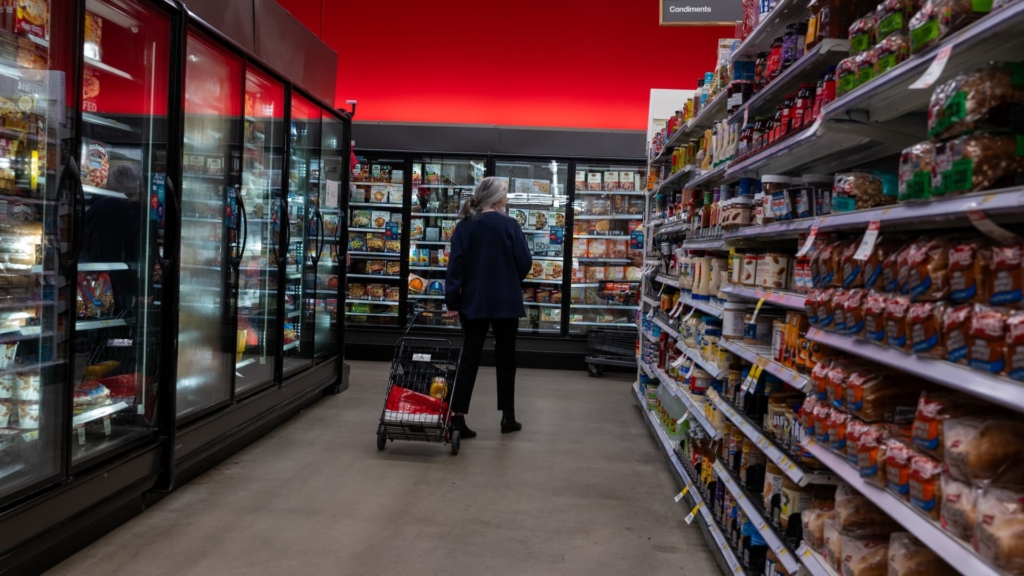According to economists, the effects of President Donald Trump’s tariff strategy and the ensuing trade conflict are poised to lead to increased consumer prices by this summer.
Mark Zandi, chief economist at Moody’s, remarked, “I suspect by May — certainly by June and July — the inflation statistics will look quite concerning.”
Tariffs serve as a tax on imports, primarily borne by U.S. businesses. Economists indicate that importers will likely transfer some of those heightened costs onto consumers.
While discussions among economists continue regarding whether the tariffs will result in a one-time price increase or a more sustained effect, there is consensus that consumers will bear the burden.
A recent analysis by the Yale Budget Lab projected a loss of $4,400 in purchasing power for consumers in the “short run,” although it does not define a specific timeframe.
‘Darkly ironic’ effect of tariffs
Current federal inflation data has yet to reflect significant impacts from tariffs, according to economists.
Interestingly, Zandi noted a “darkly ironic” situation where the threat of a global trade conflict may have inadvertently led to a “positive” inflation impact in March. Declining oil prices, spurred by concerns over a global recession and subsequent reduced demand, have contributed to lower energy costs.
“I think it’ll take some time for the inflationary shock to fully manifest,” stated Preston Caldwell, chief U.S. economist at Morningstar. “Initially, [inflation data] may look more favorable than it eventually will.”
Consumers are expected to notice significant price increases around May if the president maintains the current tariff strategies, according to Thomas Ryan, an economist at Capital Economics.
“Price increases take time to navigate through the supply chain, beginning with producers, then reaching retailers and wholesalers before finally affecting consumers,” Ryan noted in an email.
Capital Economics anticipates that the consumer price index will peak at approximately 4% by 2025, a notable rise from 2.4% as of March. This projected peak is significantly above the Federal Reserve’s long-term target.
Food prices to rise first
Food items are likely to be at the forefront of price increases, according to Zandi.
Due to the perishable nature of many food products, retailers cannot stock up for long, which facilitates a quicker pass-through of higher costs to consumers.
Conversely, other retailers may still have older inventory that was not subject to tariffs, which could delay their price adjustments, economists explained.
More from Personal Finance:
Here’s the inflation breakdown for March 2025 — in one chart
This tax strategy serves as a ‘silver lining’ amid tariff fluctuations
Reasons why the stock market disapproves of tariffs and trade conflicts
Physical goods such as vehicles, electronics, clothing, and furniture are also expected to see increased prices by Memorial Day, Zandi added.
Furthermore, retailers and wholesalers are likely to implement price hikes gradually to mitigate consumer backlash, Ryan mentioned. Therefore, the full effect of tariffs on consumer prices is expected to become evident in May and beyond.
Some companies may preemptively raise prices as a way to brace for the anticipated impact of tariffs, although this move carries risk, according to Ryan.
Caldwell warned that businesses taking this route may attract negative attention and potential political backlash. “Any company that is the first to raise prices might face boycotts and criticism,” he stated. “Consequently, I expect companies to proceed cautiously in the initial stages.”
Possible shifts in Trump’s tariff policy
Economists are navigating significant uncertainty regarding the future of President Trump’s tariff policies.
On Wednesday, Trump scaled back plans for imposing heavy tariffs on various trading partners. Kevin Hassett, head of the National Economic Council, indicated that 15 countries had submitted proposals for trade agreements.
Currently, all U.S. trading partners are subject to a uniform 10% tariff on imports, while Canada, China, and Mexico are facing additional tariffs. For instance, China is subject to a substantial 145% levy, which Caldwell described as a “de facto embargo.”
Trump has also implemented product-specific tariffs on aluminum, steel, and automobile parts.
Additionally, Zandi mentioned that prices for services like travel and entertainment could decline if foreign nations retaliate with trade restrictions or if demand from abroad decreases. Recent data reveals a “steep” drop in hotel and airline prices, which is partly attributed to decreased tourist numbers from Canada in March.


























